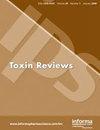Detection of heavy metals using atomic absorption and emission spectroscopy in drinking water of Faisalabad, Pakistan: microbial safety and quality status assessment
IF 2.4
4区 医学
Q2 TOXICOLOGY
引用次数: 0
Abstract
AbstractSynthetic dyes from textile industries are designated as hazardous waste since they release heavy metals and dangerous contaminants in water that harm the environment and human health. The current study was aimed at investigating the heavy metals (Cd, Cu, Pb, Ni, Zn, Cr, and Mn) in drinking water in seven regions of Faisalabad, Pakistan, through atomic absorption spectroscopy (AAS) and optical emission spectroscopy (OES). The physicochemical quality of 86.36% of the water samples met the WHO standards in the targeted regions, while 13.64% failed to meet the criteria. The water quality index (WQI) of selected water samples was calculated by integrating 11 physicochemical parameters, and the results indicated fair quality, whereas Madina, Jinnah, and Lyallpur Town showed poor water quality with contamination of Mn > Ni > Pb. The order of contamination for heavy metals in groundwater was Ni > Cu > Zn > Cr > Pb > Mn > Cd. The total plate count (TPC) and total coliform count (TCC) were found within the permissible range of WHO guidelines. Hence, consuming groundwater in the research regions may not present major health risks due to ingested metal toxicity; however, levels of Mn, Ni, and Pb might pose risks.HighlightsThe drinking water quality and safety of selected regions in the industrial city of Faisalabad, Pakistan, were assessedThe physicochemical quality of drinking water from targeted regions was 86.36% in compliance with World Health Organization (WHO)Microbiologically, drinking water was safe and zero fecal contamination was detectedThe water quality index of selected regions, calculated with CCME WQI was found fairKeywords: Heavy metalsmicrobial assessmentphysicochemical qualityatomic absorption spectroscopyatomic emission spectroscopy Disclosure statementAny author has no conflict of interest with other authors or agencies.Data availability statementData will be available on demand.Additional informationFundingNo funding source(s).使用原子吸收和发射光谱法检测巴基斯坦费萨拉巴德饮用水中的重金属:微生物安全和质量状况评估
摘要纺织工业合成染料释放的重金属和有害污染物危害环境和人体健康,被认定为危险废物。采用原子吸收光谱(AAS)和光学发射光谱(OES)对巴基斯坦费萨拉巴德7个地区饮用水中的重金属Cd、Cu、Pb、Ni、Zn、Cr和Mn进行了研究。目标区域水样理化质量达到WHO标准的占86.36%,不达标的占13.64%。综合11项理化参数计算所选水样水质指数(WQI),水质较好,而Madina、Jinnah和Lyallpur镇水质较差,Mn > Ni > Pb污染。地下水重金属污染程度依次为Ni > Cu > Zn > Cr > Pb > Mn > Cd,总平板计数(TPC)和总大肠菌群计数(TCC)均在WHO标准允许范围内。因此,在研究区域饮用地下水可能不会因摄入金属毒性而造成重大健康风险;然而,锰、镍和铅的含量可能会带来风险。对巴基斯坦工业城市费萨拉巴德选定地区的饮用水质量和安全进行了评价,目标地区的饮用水理化质量达到世界卫生组织(WHO)标准的86.36%,微生物学指标达标,饮用水安全,未检测到粪便污染,CCME WQI计算的选定地区水质指标比较合理。披露声明任何作者与其他作者或机构无利益冲突。数据可用性声明数据将按需提供。其他信息资金来源没有资金来源。
本文章由计算机程序翻译,如有差异,请以英文原文为准。
求助全文
约1分钟内获得全文
求助全文
来源期刊

Toxin Reviews
医学-毒理学
CiteScore
6.80
自引率
0.00%
发文量
36
审稿时长
>12 weeks
期刊介绍:
Toxin Reviews provides an international forum for publishing state-of-the-art reviews and guest-edited single topic special issues covering the multidisciplinary research in the area of toxins derived from animals, plants and microorganisms. Our aim is to publish reviews that are of broad interest and importance to the toxinology as well as other life science communities. Toxin Reviews aims to encourage scientists to highlight the contribution of toxins as research tools in deciphering molecular and cellular mechanisms, and as prototypes of therapeutic agents. Reviews should emphasize the role of toxins in enhancing our fundamental understanding of life sciences, protein chemistry, structural biology, pharmacology, clinical toxinology and evolution. Prominence will be given to reviews that propose new ideas or approaches and further the knowledge of toxinology.
 求助内容:
求助内容: 应助结果提醒方式:
应助结果提醒方式:


